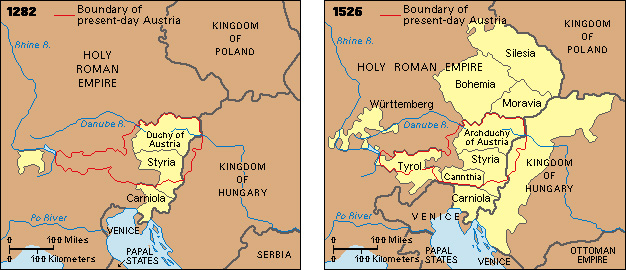Habsburg, << HAPS burg >>, House of, was one of Europe’s most famous royal families. The Habsburgs (also spelled Hapsburg) ruled the Holy Roman Empire for nearly 400 years. Members of the family occupied thrones in Europe from the 1200’s to the early 1900’s, except for a few years. The name Habsburg comes from one of the family’s first castles, the Habichtsburg (Hawk’s Castle), built about 1020 in Switzerland. In 1273, Rudolf became the first member of the family to be elected Holy Roman emperor. Three years later, he conquered Austria, which became the Habsburgs’ new home. Beginning in 1438, family members were elected Holy Roman emperor almost without interruption until 1806.

In the late 1400’s, Maximilian I greatly increased the family’s power by arranging a number of marriages between Habsburgs and members of other royal houses. By 1519, his grandson Charles V had inherited many kingdoms, including Spain and the Spanish empire in America. In 1522, Charles gave Austria to his younger brother Ferdinand. Through marriage, Ferdinand acquired Bohemia and part of Hungary four years later. Thus, after 1526, the Habsburgs consisted of two branches—a Spanish line headed by Charles’s descendants, and an Austrian line descended from Ferdinand.
The Spanish branch lasted until 1700. Charles VI, the last male heir of the Austrian Habsburgs, died in 1740. In 1736, Charles’s daughter Maria Theresa married Francis Stephen, Duke of Lorraine. As Francis I, he regained the throne of the Holy Roman Empire for the family in 1745. The descendants of Francis and Maria Theresa were Holy Roman emperors until 1806 and emperors of Austria from 1804 to 1918.
